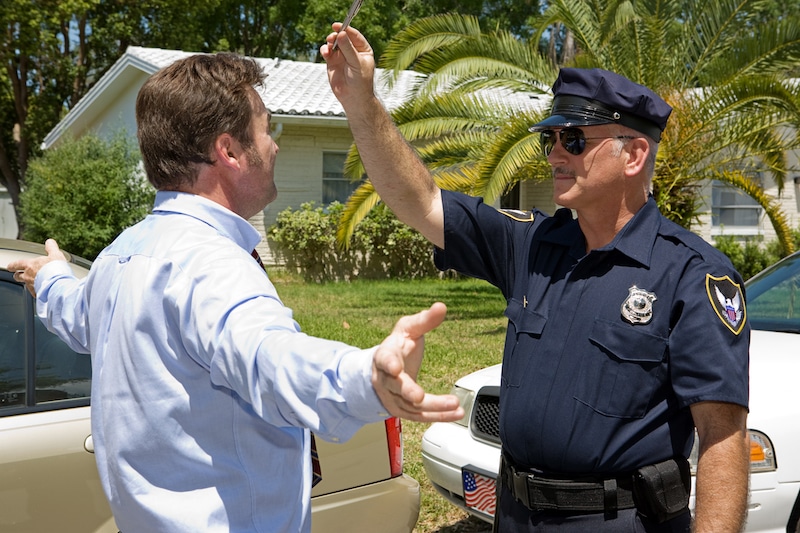Field sobriety tests are one of the methods used by law enforcement to determine sobriety in suspected DWI or DUI cases. Understanding how this methodology works, what law enforcement considers a significant sign of intoxication, and how this might be applied to a DWI case is vital for building a proper defense.
Today, we’ll be looking at “The Eye Test”, also known as the Horizontal Gaze Nystagmus. It is one of three standardized field sobriety tests created by the National Highway Traffic and Safety Administration (NHTSA), designed to identify drivers who have been operating their vehicles while under the influence.
Horizontal Gaze Nystagmus is the lateral jerking movement of the eyeballs, akin to the movement of your eyes when you look sharply to the far sides of your peripheral vision. The term “nystagmus” is the technical term for rapid involuntary movement of the eyes, which can occur when there is some form of irregularity in the inner ear system of the person or driver in question.One stimuli that can cause this movement is alcohol, as it hinders your ability to fully control the mobility of your eye muscles.
“The eye test” is conducted by a police officer, and is administered by the officer moving his penlight in front of the driver’s eyes about a foot away from a person’s face. The officer will ask the driver to follow the light with their eyes, and the officer will examine the pupils of the driver to see the angle at which their eyes are twitching. If the officer notices that your eyes twitch at a certain angle, this is considered a sign of potential intoxication or high blood alcohol level.
Accuracy of the DWI Eye Test
Compared to other standard or stereotypical sobriety tests, such as the one leg stand test, or the walk and turn test, the eye test is fairly new and tends to be more accurate.
Where the balance related tests are often designed to have a sort of pass-fail reading, which can be thrown off by a much wider range of issues beyond intoxication, the eye test is designed to actually examine involuntary bodily spasms that may be brought about by excess alcohol in the body.
Apart from having serious eye issues, there is no reason that a person who is reasonably healthy and otherwise capable of driving should have Horizontal Gaze Nystagmus at all. The stimuli that is measured by the eye test makes it one of the most accurate field sobriety tests, with an approximate 77 percent accuracing rating in detecting blood alcohol contents that exceed the legal limit.
Of course, one issue remains. In spite of the perceived accuracy rating, the administration of the eye test still relies on the discretion of the police officers administering the test. That means that while the test itself is fairly accurate, the officer performing the test may read the results differently on a case by case basis.
Why Is This A Problem?
In most cases, officers will be trained to perform these field sobriety tests in order to obtain the most accurate results possible. However, human error is always a factor, and there are plenty of circumstances that can impact the reading of a test that relies on such slight physical responses.
When facing a potential DWI charge, the impact on a person’s life is immense, from the potential fines and punitive measures to the loss of your driver’s license. Relying on a test that may provide unreliable results due to human error isn’t always a comforting experience for people whose future hangs on the results. That’s why there is an increasing and ongoing need for skilled Houston DWI lawyers to protect those wrongfully accused.
If you or a loved one has been subjected to a field sobriety test, taken the eye test, or have any general questions about field sobriety testing, eye tests, or other DWI detection processes, contact Trichter & LeGrand today for a free consultation. You can speak with one of our expert criminal defense attorneys in Houston, and learn all about the various sobriety tests and other DWI detection methods that may be used and defended against in court.
Defend Yourself Today







